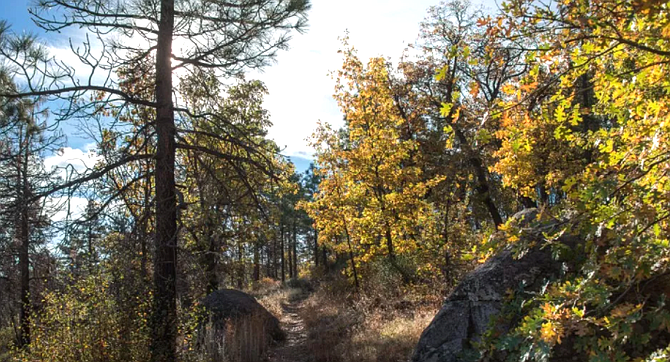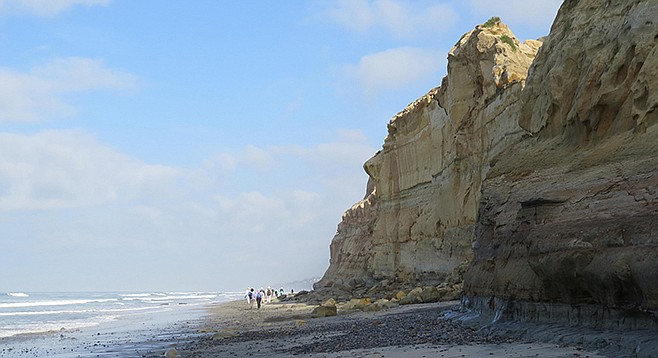 Facebook
Facebook
 X
X
 Instagram
Instagram
 TikTok
TikTok
 Youtube
Youtube

October’s Lowest Tides, coinciding with afternoon hours several days in a row, usher in several months of excellent tidepooling opportunities to come. A -0.7 foot tide occurs at 4:27 p.m. on the 17th; a -0.8 foot tide occurs at 5:17 p.m. on the 18th; and a -0.6 foot tide occurs at 6:13 p.m. on the 19th. The region’s best-known places to view intertidal life include Cabrillo National Monument and areas up the coast from La Jolla.

The Tawny Hues of the Black Oak Tree are just beginning to highlight the slopes of San Diego County’s higher mountains. Named for the dark coloring of its bark, especially when wet, the black oak is the only deciduous oak native to the county. Associating with pines, firs, cedars, various evergreen oaks, and occasionally chaparral, the black oak lends a true autumn coloring to the Cuyamaca, Laguna, and Palomar mountains.
Mars comes to opposition on October 13th. All week it is still essentially at its closest to Earth, remaining 22.5 to 22.0 arcseconds in apparent diameter. This is bigger that we will see it again until September 2035.

Mars is climbing into good view a little earlier every night. In late dusk it glares fiery orange, brighter even than Jupiter, low in the east. It's high in the southeast by 10 or 11 p.m. daylight-saving time, and it's its highest at its telescopic best by midnight or 1 a.m., blazing in the south.
The above comes from the Outdoors listings in the Reader compiled by Jerry Schad, author of Afoot & Afield in San Diego County. Schad died in 2011. Planet information from SkyandTelescope.org.


October’s Lowest Tides, coinciding with afternoon hours several days in a row, usher in several months of excellent tidepooling opportunities to come. A -0.7 foot tide occurs at 4:27 p.m. on the 17th; a -0.8 foot tide occurs at 5:17 p.m. on the 18th; and a -0.6 foot tide occurs at 6:13 p.m. on the 19th. The region’s best-known places to view intertidal life include Cabrillo National Monument and areas up the coast from La Jolla.

The Tawny Hues of the Black Oak Tree are just beginning to highlight the slopes of San Diego County’s higher mountains. Named for the dark coloring of its bark, especially when wet, the black oak is the only deciduous oak native to the county. Associating with pines, firs, cedars, various evergreen oaks, and occasionally chaparral, the black oak lends a true autumn coloring to the Cuyamaca, Laguna, and Palomar mountains.
Mars comes to opposition on October 13th. All week it is still essentially at its closest to Earth, remaining 22.5 to 22.0 arcseconds in apparent diameter. This is bigger that we will see it again until September 2035.

Mars is climbing into good view a little earlier every night. In late dusk it glares fiery orange, brighter even than Jupiter, low in the east. It's high in the southeast by 10 or 11 p.m. daylight-saving time, and it's its highest at its telescopic best by midnight or 1 a.m., blazing in the south.
The above comes from the Outdoors listings in the Reader compiled by Jerry Schad, author of Afoot & Afield in San Diego County. Schad died in 2011. Planet information from SkyandTelescope.org.
Comments